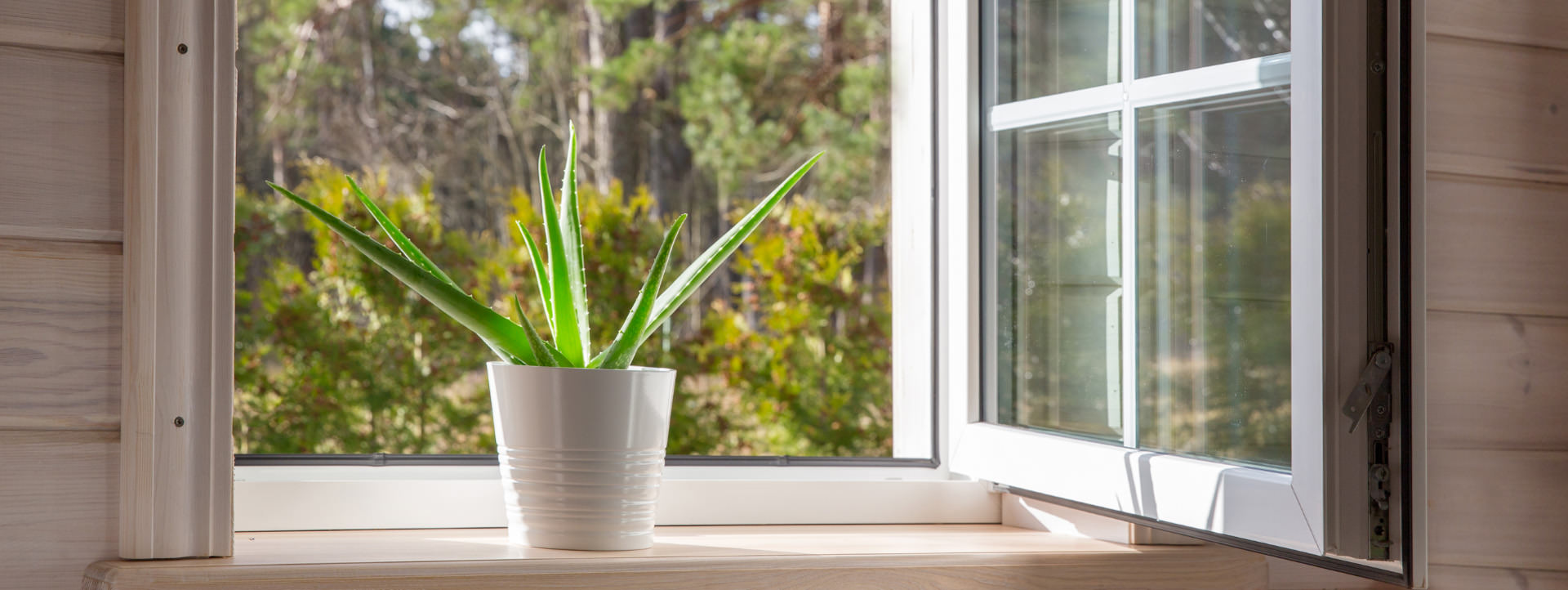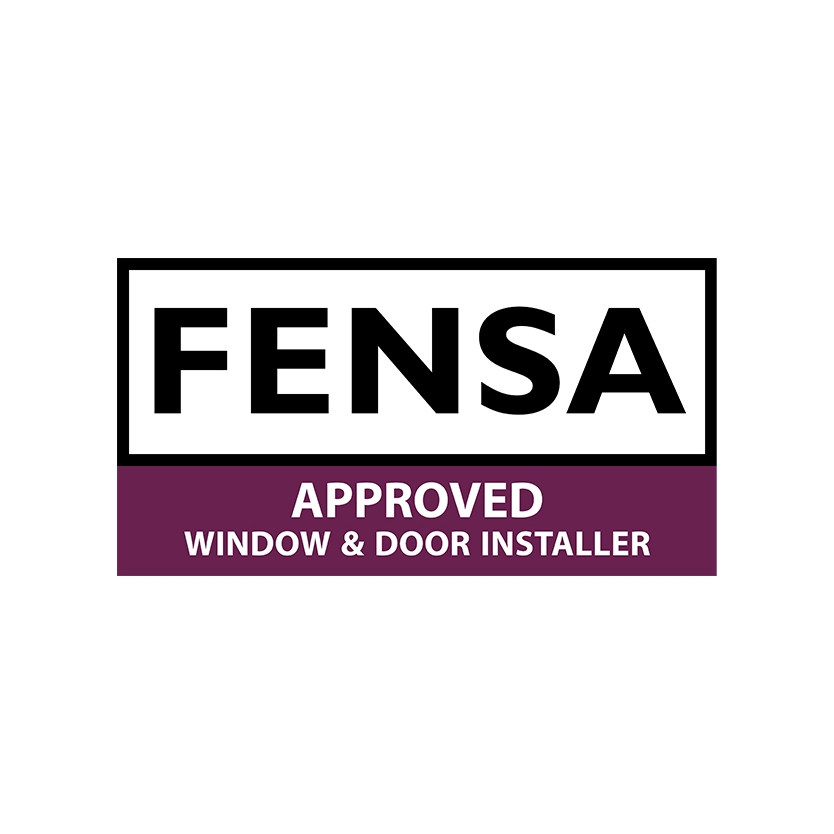
Timber - PVC - Aluminium - Windows, Doors & Conservatories in Dorset
Triple Glazing – is it worth the extra money?
Triple Glazing – is it worth the extra money?
In an age when energy prices are only heading in one direction, fitting your home with new KJM’s Deceuninck, Profile 22, Residence 9 or Residence 7 triple glazed windows can improve your energy efficiency by up to 50%, compared to standard ‘A’ rated double glazing. Well that’s the selling bit over and done with!
My blog article aims to inform the consumer about triple glazing, the pro’s and con’s, is the product worth the extra money?
Triple glazing introduction
Triple glazed windows are still a relatively new concept in the UK. But in colder countries like Scandinavia, where homes endure extreme winter weather, they have been a standard fitment for many years. While we might not get the same severity of weather conditions, the UK does still suffer from harsh winters and of course increasing energy prices. You must also remember there are other ways to insulate your home like the roof, walls and floor, but neglecting your windows can result in cold spots and condensation.
Personally I installed 44mm triple glazing into my own home in 2012 and I have never looked back since. Some from within KJM would describe me as “KJM’s Triple Glazing King”, as I passionately believe in the product. I was even asked to speak at our national trade show about the benefits of triple glazing, but declined as it was over three days and in Telford, along way from our base in Andover in Hampshire. There are pro’s and cons’s to triple glazing and I will do my best to explain this in simple language.
Benefits of Triple Glazing & U-Values
There are many benefits to installing triple glazing in your home but the important thing to remember is that all triple glazing is not the same. There are many systems available but to really get the maximum benefit, the gaps between the panes of glass should be 16mm and filled with argon gas. Argon is an inert gas that reduces the heat loss through the panes. If the gap is reduced then the thermal performance of the sealed unit is reduced, unless you start to use an expensive gas like krypton. In the datasheets below you will see that a 28mm krypton filled sealed unit performs as well as a 40mm argon filled triple glazed unit, however beware the superman of all gases ‘krypton’ costs around 100 times more than argon, so nearly triples the cost of the triple glazed unit.
Generally speaking the optimum size of a triple glazed sealed unit should be 4mm glass, 16mm gaps, so in our industry it’s called a 4/16/4/16/4 unit and that equals 44mm in total. If you just compare the u-values of the glass then the comparison between 44mm triple unit and a 28mm double glazed unit is large. The typical centre pane u-value of the 44mm unit is 0.5, the best 24mm double glazed unit 1.0.
U-Values
U-values are quite a complex subject so understanding and measuring U-values has become increasingly important as we aim to improve the sustainability and performance of our homes.
What is a U-Value?
U-Value – is the measure of the overall rate of heat transfer through a particular section of material, so in our case either the frame or glass. In simple terms, a U-value is used to measure how well or how badly the glass or frames transmits heat from the inside to the outside. The slower it is for heat to transfer through the component, the lower the U-value. This means that we are always looking for a lower U-value. To add to the confusion of u-values with windows there are always three different U-values:
Uw (w = window) – overall value of the window
Uf (f = frame) – U-value of the frame
Ug (g = glazing) – U-value of the glazing (often called centre pane)
The lower the U-value the better.
To work out how much heat passes through each element of the window you need to determine the U-value based on the amount of energy lost through a square metre of material, in our case both the frame and glass. This is where things can get really complicated. Obviously, there is a difference in U-values between, say a colder aluminium frame and a uPVC frame, as one is a good conductor and the other not so good. However when you consider uPVC windows are multi chambered (the Residence 9 systems has nine chambers) and can be reinforced with either more plastic, steel or aluminium. Each additional component/material changes the u-value of the frame, add to this the amount of frame, sash or mullion that can vary from window to window, the complexity just continues. To provide an accurate overall frame u-value the exact design needs to be inputted into a computer u-value calculator.
The U-Value is measured in W/m² K This is broken down as the rate of heat flow (in watts) through 1m² of a structure when there is a temperature difference across the structure of 1 degree (K or ˚C)
Further complications in frame u-values
The recent addition of trickle vents has in my opinion changed the overall energy rating for newer windows. The rules changed in 2022 for the near compulsory use of trickle vents, none of KJM’s suppliers have returned to us with new ratings based on the additional 000’s of square mm of trickle vents that need to be added to almost ALL windows, rendering most Uf’s incorrect.
In short I don’t believe that overall window u-values hold much overall value as they can be so inconsistent, whereas glass u-values are an easy way to make a comparison.
Typical U-values with triple glazed windows
You will see from the below that different sized units provide some very different u-values. There are also different types of soft-coat (thermally efficient) glasses and they don’t all provide the same thermal performance. Covid made the supply-chain poor to say the least and as I write this ammendment in August 2022, some glass supply is still scarce. Our current glass suppliers softcoat glass of choice is Pilkington Optitherm™ S1 Plus. This is the latest in Pilkington’s low-e range offering ultra low-emissivity and achieving a Ug-value of only 1.0 W/m2K when incorporated in a 24mm double glazed unit and 0.5 W/m2K in a 44mm triple glazed unit. Pilkington say the “Optitherm™ S1 Plus glass combines superior light transmittance with a highly neutral colour. It is the ultimate in thermal insulation and should be specified for any situation where excessive heat loss is a concern”
Sealed unit size Unit make-up Glass u-value
28mm double 4/20/4 1.1
24mm double 4/16/4 1.0
36mm triple 4/12/4/12/4 0.7
40mm triple 4/14/4/14/4 0.6
44mm triple 4/16/4/16/4 0.5
Pilkington triple-glazing datasheets
44mm argon filled triple-glazing
40mm argon filled triple-glazing
36mm argon filled triple-glazing
28mm krypton filled triple-glazing
Triple glazing datasheets – Information for techies
Triple Glazing v Double glazing
Triple glazing very simply put is an extra pane of glass over a double glazed unit. However this enhances the performance in a number of ways:-
- The extra pane of glass provides another barrier against the cold winter weather making your home warmer and cooler in the summer.
- The extra pane also means an additional spacer bar at the edge of glass to reduce thermal transmittance
- The extra pane provides additional security to the glass element of the window. The middle pane is normally toughened.
- Sound insulation is marginally improved over a double glazed unit, if the same thickness of glass is used throughout.
- Triple glazed windows can normally get the best Energy A++ rating
Low E glass
Low emissivity (low-e or low thermal emissivity). This is a coating applied to the glass that increases the thermal performance of the window. On a triple glazed window the internal pane and middle pane of the sealed unit should have a low-e coating. Low-e is a microscopically thin metallic coating applied to the glass that reflects heat back into the room.
Solar Gain – G Value
The ‘G-Value’ measures the degree to which glazing blocks heat from sunlight. The G-value is the fraction of the heat from the sun that enters through a window. G-value is expressed as a number between 0 and 1. The lower a glazing’s G-value, the less solar heat it transmits. Triple glazing does not enhance the solar gain performance of the window, the better insulated a product the lower levels of solar gain.This is because triple glazing will normally have two panes of low-e glass. In the UK levels of solar gain are lower because of our climate and it would mainly only apply to South facing elevations. To put this in simple terms, the greenhouse effect. A single glazed green house is great for solar gain, a triple glazed one not so good. If you wanted to keep the green house warm at night then triple glazing would be much better than single glazing, so its a balance.
You also need to factor in the number of chambers within the frame, the fewer chambers the less insulated the frame. The Veka system uses thermal inserts within the frame to improve the insulation further, whilst the Residence 9 windows have a market leading nine chambers in a frame of 100mm depth.
Are there any triple glazing downfalls?
Are there any down-falls I hear you ask? The biggest problem I’ve encountered with my own windows would be the external condensation on the glass. This happens because the external pane of glass is not being heated so well by your house, so if the glass drops to less in temperature than the outside air, then you reach “dew point” and condensation forms. It’s the exact reason that you get dew on your car windows. It will generally happen after a cold clear night and it would best be described as a light misting that forms from the centre of the pane, actually it’s in the complete opposite place it would form on the inside. This is because the glass in effect is being heated through the frame and spacer bar, so the outer edge of the glass is warmer than the centre. When you get internal condensation it’s the opposite way, because in reverse the outer perimeter of the internal glass is the coldest.
You can find that ‘A’ rated double glazing will suffer from the same problem, but the effects are much less. As I told my wife when she first spotted the external condensation “It just goes to show how well insulated our windows are”. They usually clear fairly quickly in the morning, so it certainly does not bother me. Further information on this can be found on this condensation technical document from our glass supplier.
Light Levels and Triple glazing
Light? Having three panes of glass, with two of them having a low e coating, there would be a drop in the natural light coming through the window as the low e coatings darken the glass slightly. Back to my own experience of my windows at home, from the old double glazing to the new triple glazing I did not notice any difference, so I expect this would only be detected with some some good light monitoring equipment.
Triple Glazing Security
Security? Three panes would have to be more secure than two, so there is an obvious difference. The middle pane of a triple glazed unit should be toughened especially if the glass faces a sunny elevation, at KJM we toughen all middle panes regardless of elevation. This helps with the stresses that occur with the heat build up within the sealed unit, especially important on a hot and sunny summers day. Yes they do happen in the UK sometimes!
Is Triple Glazing worth it? – Triple Glazing Cost
Triple glazed sealed units are more expensive than double glazed ones obviously.It works out as a simple extra square metre cost usually that we are happy as a company to show as an extra cost. In the UK houses lose up to 20% of heat through the windows alone, so some would say if you are changing your windows, then fitting the best insulated products is the most sensible thing to do. You then need to factor in the extra cost of triple glazing against the saving in heating bills, the payback time will certainly not be over-night, that said a customer once said to me “we would like to live as comfortably as possible, so we feel triple glazing is the right product for us” The decision ultimately will be your own!
Triple Glazing is it a ‘green’ product? What about the carbon footprint?
Is triple glazing a green product? This will always be the most difficult question to answer. The energy and material required to manufacture glass and the sealed unit, including the extra spacer bar will add to the carbon footprint of the product. Did you know that you can buy the mainly recycled PVC system Veka Infinity in our triple glazing range? So if you really want to protect the environment then you can specify this system. Up to 80% of the core (the bits you don’t see) are made from recycled PVC, the important outside is manufactured from virgin PVC in a very clever co-extruded process. Specifying this profile certainly reduces the carbon footprint of triple glazing. See a video on the Veka Infinity Profile below:-
Triple glazing sound insulation
The next thing you might find on the internet about triple glazing is improved sound insulation. There is a lot of misinformation out there and many claim it improves sound insulation because they believe three panes are better than two. Scientific tests would show that if all three panes are the same thickness of glass then the benefit to sound insulation is very marginally better at best. If you introduce one different thickness of pane, say one pane of 6mm glass and two panes of 4mm then this would improve the sound insulation more, because the different thicknesses of glass will change the wave length of the sound as it passes through the glass, thus reducing the sound transmittance. It would be worth pointing out at this stage that an open window will stop nothing and then there is my other pet-hate “trickle vents” that are notorious for leaking sound. That is a subject for another blog as there are better quality trickle vents on the market. Please see my trickle vent blog page
Extra weight from the glass is another problem, so oversized opening windows and doors are generally a “no-no” but traditional British casement window sizes have not produced a problem for KJM over the last few years, so we are confident in what we sell.
Summary
In summary I love triple glazing and I can see no reason why if you were changing your windows that you did not consider the option. Yes it costs more, but it will “future proof” your home and in the long term you will recoup your extra costs through the energy savings. It should also make your home much more attractive to potential buyers, if you decided to sell. At KJM it costs nothing to get a quotation and of course we can price for both ‘A’ rated double glazing and provide an additional upgrade cost to triple glazing.
Our Triple glazing product range
Our triple glazing page on this website.
Triple Glazing Hampshire – KJM…..Amazing Triple Glazing













